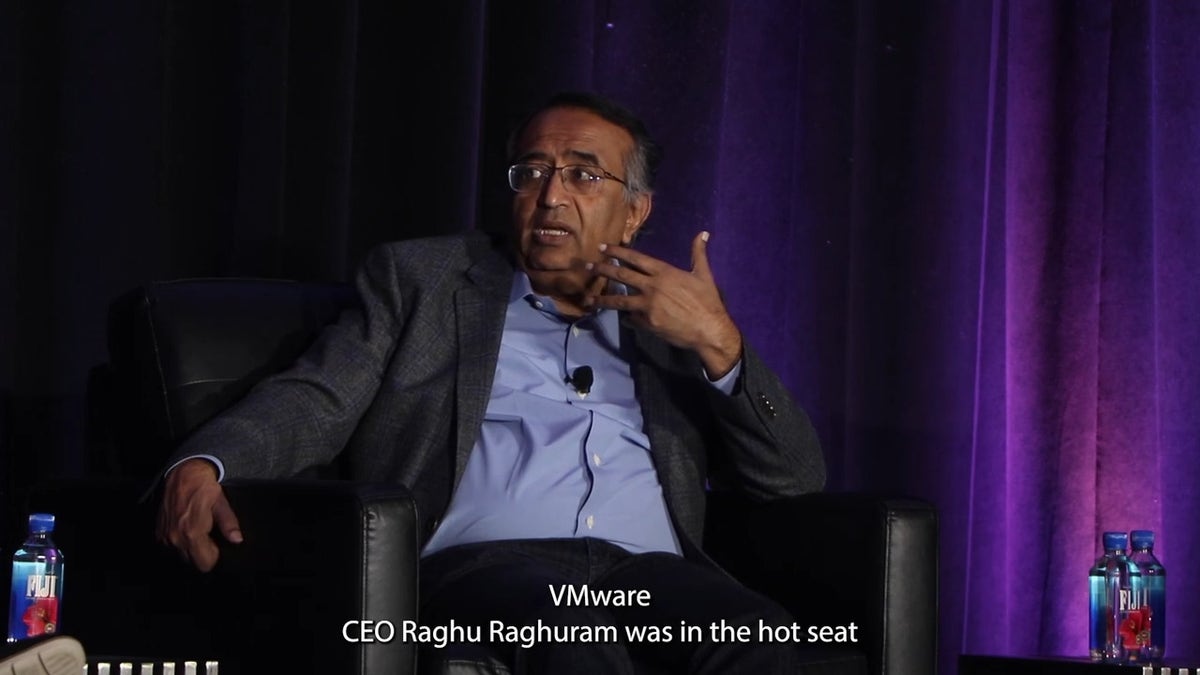Extreme VMware Price Hike: AT&T Highlights 1,050% Increase From Broadcom

Table of Contents
The Shocking Statistics: Deconstructing the 1,050% VMware Price Increase
AT&T's claim of a 1,050% increase in VMware licensing costs following Broadcom's acquisition is unprecedented. While precise figures haven't been publicly released by Broadcom for all VMware products, AT&T's statement highlights the dramatic scale of the price jump. This translates to real-world cost implications that vary greatly depending on a business's size and VMware usage. A small business with a modest VMware deployment could face thousands of dollars in increased annual costs, while larger enterprises might see millions added to their IT budgets.
- Specific examples of VMware products affected: While not all products have been publicly detailed, the price increase likely affects core VMware vSphere, vSAN, and NSX components, impacting the entire virtualization stack.
- Comparison of previous VMware licensing costs to new Broadcom pricing: Direct comparisons are difficult without official Broadcom pricing, but AT&T's 1,050% figure suggests a previously unheard-of jump in cost per license, per core, or per virtual machine, depending on the licensing model.
- Impact on smaller businesses vs. large enterprises: The percentage increase is the same, but the absolute dollar amount will significantly impact smaller businesses with tighter IT budgets, potentially forcing them to reconsider their virtualization strategy or seek cheaper alternatives. Large enterprises, while still heavily impacted, may have more financial resources to absorb the shock.
Broadcom's Acquisition of VMware: A Catalyst for Price Increases?
Broadcom's acquisition of VMware in 2023 is undeniably linked to the significant price hike. While Broadcom claims the increase reflects market value and investment in product development, many see it as a move to maximize profits after a significant investment. The resulting market consolidation gives Broadcom considerable leverage in setting prices.
- Timeline of the acquisition and subsequent price changes: The acquisition closed in late 2023, and the price increases followed shortly after, raising immediate concerns about monopolistic practices.
- Expert opinions and analysis on Broadcom's pricing strategy: Industry analysts are expressing concern, suggesting the price increase could stifle innovation and competition within the virtualization market. Antitrust concerns are being voiced, particularly regarding the potential impact on smaller businesses and the overall competitiveness of the market.
- Comparison to pricing strategies of other major software vendors: While other software vendors have also increased prices, the magnitude of the VMware price increase is far beyond typical adjustments, prompting comparisons to potentially anti-competitive behavior.
Impact on Businesses and the Broader IT Landscape
This extreme VMware price hike has wide-ranging implications for businesses and the IT landscape. The financial burden on IT departments is substantial, forcing a reevaluation of IT budgets and potentially delaying or canceling other crucial projects. This will likely cause a wave of evaluation of alternative solutions and a shift in the virtualization market.
- Potential budget impacts on IT departments: A significant portion of IT budgets will need to be reallocated to cover the increased VMware licensing costs, impacting other IT initiatives.
- Increased pressure on IT managers to find cost-effective solutions: IT managers are now under immense pressure to find cost-effective alternatives, optimize existing deployments, or renegotiate contracts.
- The potential for legal challenges or regulatory scrutiny of the price hike: The extreme nature of the price increase may lead to legal challenges or regulatory investigations into potential anti-competitive practices.
Exploring Alternatives to VMware in Light of the Price Hike
The VMware price hike is driving many businesses to explore alternatives. Open-source solutions and other virtualization platforms offer potentially significant cost savings.
- Examples of alternative virtualization platforms (e.g., oVirt, Proxmox): Open-source platforms like oVirt and Proxmox offer feature-rich alternatives to VMware vSphere, often at a fraction of the cost. Other commercial options also exist.
- Cost comparison between VMware and alternative solutions: A thorough cost-benefit analysis is crucial when comparing the total cost of ownership (TCO) of VMware with open-source or other commercial alternatives.
- Considerations for migrating from VMware to an alternative: Migration requires careful planning, testing, and potential downtime. The complexity of the migration will vary based on the size and complexity of the VMware environment.
Strategies for Mitigating the Impact of the VMware Price Increase
Businesses can take several steps to mitigate the financial impact of the VMware price increase. Proactive planning and strategic decision-making are essential.
- Negotiating with Broadcom for better licensing terms: While challenging, negotiating with Broadcom for better licensing terms, volume discounts, or alternative payment structures is a potential avenue to explore.
- Optimizing VMware deployments for greater efficiency: Optimizing existing VMware deployments by consolidating virtual machines, right-sizing resources, and streamlining management can reduce licensing costs.
- Exploring subscription models or alternative pricing strategies: Evaluating different licensing models and exploring subscription-based options may offer more predictable and potentially lower costs in the long run.
Conclusion
The extreme VMware price hike, with its staggering 1,050% increase reported by AT&T, presents a significant challenge for businesses of all sizes. The implications are far-reaching, impacting IT budgets, strategic planning, and potentially even triggering a shift towards open-source solutions and alternative virtualization technologies. This unprecedented increase demands a comprehensive review of your virtualization strategy and proactive steps to mitigate the financial impact.
Don't let the extreme VMware price hike cripple your IT budget. Explore alternative virtualization solutions and strategies to minimize the cost impact. Research open-source options like oVirt and Proxmox, optimize your current VMware deployment, and carefully evaluate licensing models. Proactive management of your VMware licensing is now more crucial than ever.

Featured Posts
-
 Neymar Sem Brilho Corinthians Derrota Santos Por 2 A 1
May 05, 2025
Neymar Sem Brilho Corinthians Derrota Santos Por 2 A 1
May 05, 2025 -
 Bradley Cooper Keeps His Distance The Gigi Hadid Leonardo Di Caprio Connection
May 05, 2025
Bradley Cooper Keeps His Distance The Gigi Hadid Leonardo Di Caprio Connection
May 05, 2025 -
 Westbrooks Record Breaking Night Nuggets Vs Warriors Game Analysis
May 05, 2025
Westbrooks Record Breaking Night Nuggets Vs Warriors Game Analysis
May 05, 2025 -
 Predicting The 2025 Louisiana Derby Odds Field Analysis And Kentucky Derby Prospects
May 05, 2025
Predicting The 2025 Louisiana Derby Odds Field Analysis And Kentucky Derby Prospects
May 05, 2025 -
 Rumours At 48 Fleetwood Macs Implosion And The Album That Defined A Generation
May 05, 2025
Rumours At 48 Fleetwood Macs Implosion And The Album That Defined A Generation
May 05, 2025
